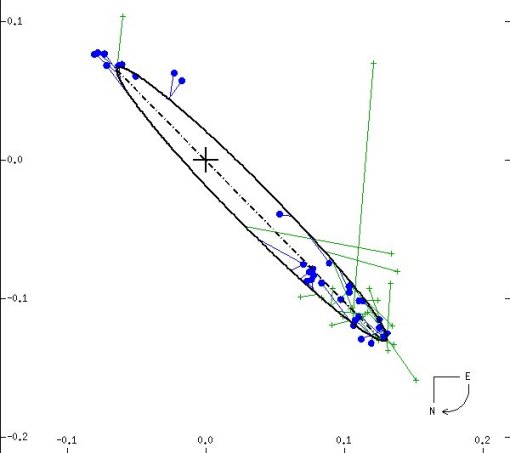
 |
The orbit of Chi-1 B around Chi-1 A (at the cross) is not only fairly eccentric (e=0.35) but is tilted at a high angle to the sky, 95 degrees, which together give the orbit its skinny look. The tilt is almost enough to make the double into an eclipsing binary. In reality, each star has its own orbit about a common center of mass, though for this pair they are almost identical. Note the scale: the stars at best are only a few tenths of a second of arc apart, the two taking only 7.603 years to go around each other at an average distance of 5.9 Astronomical Units (3.9 AU at periastron, 8.0 at apastron). They were physically (though not on the sky) last closest together late in 2013. From the Sixth Catalog of Orbits of Visual Binary Stars , W. I. Hartkopf and B. D. Mason, US Naval Observatory Double Star Catalog, 2006. |